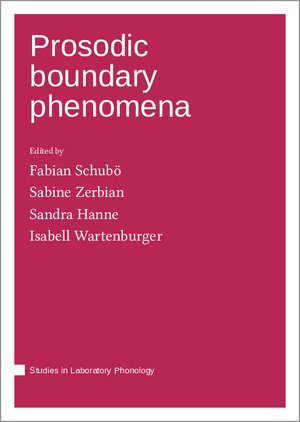In spoken language comprehension, the hearer is faced with a more or less continuous stream of auditory information. Prosodic cues, such as pitch movement, pre-boundary lengthening, and pauses, incrementally help to organize the incoming stream of information into prosodic phrases, which often coincide with syntactic units. Prosody is hence central to spoken language comprehension and some models assume that the speaker produces prosody in a consistent and hierarchical fashion. While there is manifold empirical evidence that prosodic boundary cues are reliably and robustly produced and effectively guide spoken sentence comprehension across different populations and languages, the underlying mechanisms and the nature of the prosody-syntax interface still have not been identified sufficiently. This is also reflected in the fact that most models on sentence processing completely lack prosodic information.
This edited book volume is grounded in a workshop that was held in 2021 at the annual conference of the Deutsche Gesellschaft für Sprachwissenschaft (DGfS). The five chapters cover selected topics on the production and comprehension of prosodic cues in various populations and languages, all focusing in particular on processing of prosody at structurally relevant prosodic boundaries. Specifically, the book comprises cross-linguistic evidence as well as evidence from non-native listeners, infants, adults, and elderly speakers, highlighting the important role of prosody in both language production and comprehension.
This edited book volume is grounded in a workshop that was held in 2021 at the annual conference of the Deutsche Gesellschaft für Sprachwissenschaft (DGfS). The five chapters cover selected topics on the production and comprehension of prosodic cues in various populations and languages, all focusing in particular on processing of prosody at structurally relevant prosodic boundaries. Specifically, the book comprises cross-linguistic evidence as well as evidence from non-native listeners, infants, adults, and elderly speakers, highlighting the important role of prosody in both language production and comprehension.






